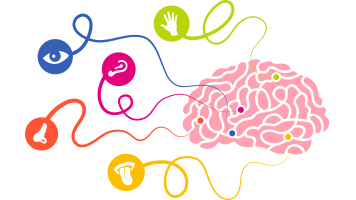When you think of muscles, you probably think of your biceps and triceps. You won’t necessarily think of the small muscles close to your spine and skull. These small muscles do in fact play a very important role – they tell your brain what your spine is doing, which represents what the core of your body is doing.
Chiropractic adjustments help restore healthy movement
Spinal Dysfunction
If your spinal segments aren’t moving correctly it may cause background noise for your brain or your brain might not get adequate information about what’s happening in your body, and will therefore have to fill in blanks. When your brain can accurately perceive what is going on inside and out, it can better control your body for the situation at hand.
Reboot Your Brain
A chiropractor will gently adjust any dysfunctional spinal segments, or what they call vertebral subluxations, to restore healthy movement. This can improve the communication between your brain, your body and the environment. It is a lot like rebooting a computer.
Video Transcript
We know that your brain receives information about your body from the environment, from your sensory organs – such as your eyes, ears, and nose.
But did you know that the muscles in your body are also sensory organs?1 As your body moves, muscles stretch, and this information is sent to your brain, so it knows what your body is doing.2 3
When you think of muscles you probably think of your biceps and triceps. You won’t necessarily think of the small muscles close to your spine and skull.
These small muscles do in fact play a very important role – they tell your brain what your spine is doing, which represents what the core of your body is doing.
But, if your spinal segments begin to move in a dysfunctional way – for example due to an injury or bad posture – that communication between your spinal muscles and your brain becomes distorted, which means you have a communication breakdown between your brain and your body.1
If your spinal segments aren’t moving correctly it may cause background noise for your brain or your brain might not get adequate information about what’s happening in your body, and will therefore have to fill in blanks.1
Let’s explore an analogy. Imagine for a moment that you have lived in a house all your life, and in this house, there is a long corridor with no windows. At the end of the corridor is the electrical fuse box. Now imagine that the circuit breaker to the lights has blown and you are pitched into complete darkness. Would you be completely helpless?
Or could you walk down that corridor, and turn the circuit breaker back on?
Of course, you could! You have lived there all your life. You would know roughly how long the corridor was and how wide it was. You would be able to get down there and turn the lights back on. Your brain is just as smart as that.
It can function even if there are parts of your body that it cannot ‘see’. It will be able to function and control those parts of your body because of past experience.
But now imagine that before those lights went out, your kids had left a bicycle in that long corridor that you had not seen. What would happen in that scenario? You would likely fall and hurt yourself. And this is what happens when the brain is not fully aware of what is going on somewhere in the body. You could end up having an accident or hurt yourself.
This is where your chiropractor comes in. A chiropractor will gently adjust any dysfunctional spinal segments, or what they call vertebral subluxations, to restore healthy movement. This can improve the communication between your brain, your body, and the environment. It is a lot like rebooting a computer.
When your brain can accurately perceive what is going on inside and out, it can better control your body for the situation at hand, and move muscles in the right order. 1 4 5
This means your body moves accurately, you have fewer accidents, and you can function and perform at your best.
Video references
- Haavik H, Murphy B. The role of spinal manipulation in addressing disordered sensorimotor integration and altered motor control. J Electromyogr Kinesiol 2012;22(5):768-76.
- Pickar JG. Neurophysiological effects of spinal manipulation. Spine J 2002;2(5):357-71.
- Pickar JG, Bolton PS. Spinal manipulative therapy and somatosensory activation. J Electromyogr Kinesiol 2012;22(5):785-94.
- Haavik H, Murphy B. Subclinical neck pain and the effects of cervical manipulation on elbow joint position sense. J Manipulative Physiol Ther 2011;34(2):88-97.
- Holt KR, Haavik H, Lee AC, et al. Effectiveness of chiropractic care to improve sensorimotor function associated with falls risk in older people: A randomized controlled trial. J Manipulative Physiol Ther 2016;39(4)267-78
- Haavik H, Kumari N, Holt K, Niazi IK, Amjad I, Pujari AN, Türker KS, Murphy B. The contemporary model of vertebral column joint dysfunction and impact of high-velocity, low-amplitude controlled vertebral thrusts on neuromuscular function. Eur. J. Appl. Physiol. 2021;121(10):2675-2720. 10.1007/s00421-021-04727-z.
- Haavik H, Niazi IK, Kumari N, Amjad I, Duehr J, Holt K. The potential mechanisms of high-velocity, low-amplitude, controlled vertebral thrusts on neuroimmune function: A narrative review. Medicina (Kaunas, Lithuania). 2021;57(6). doi:10.3390/medicina57060536

